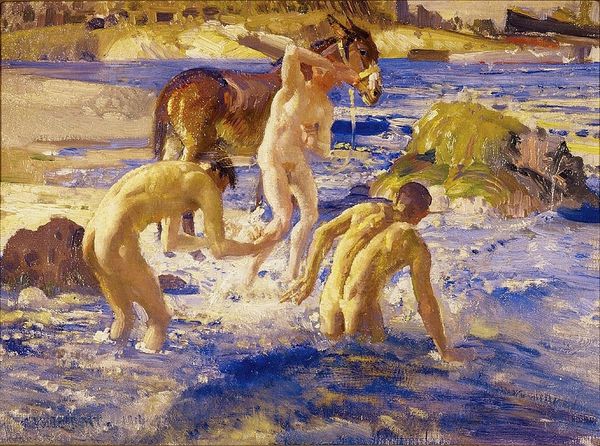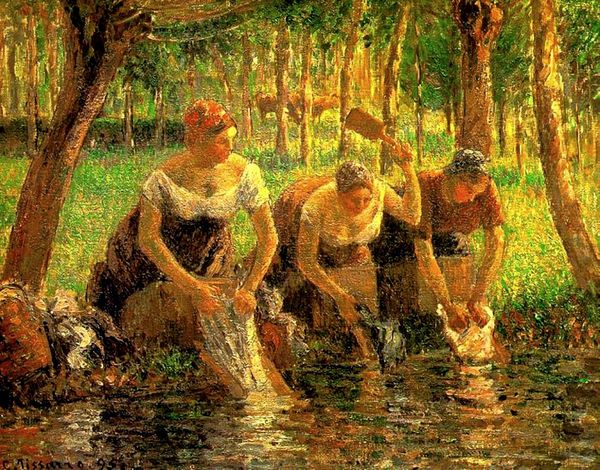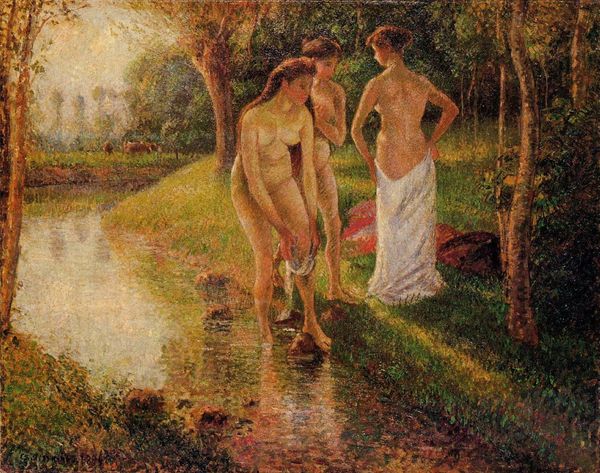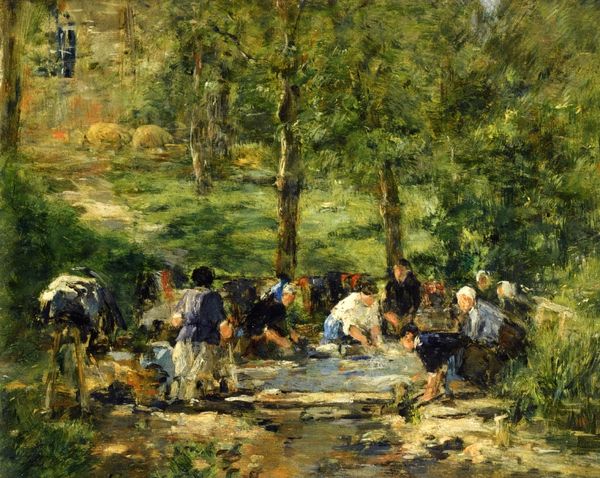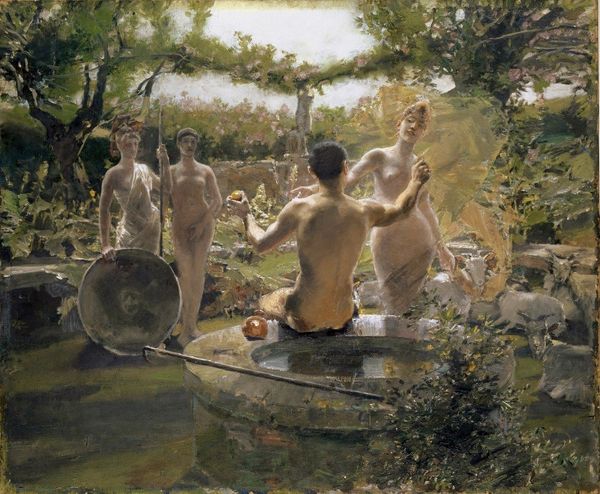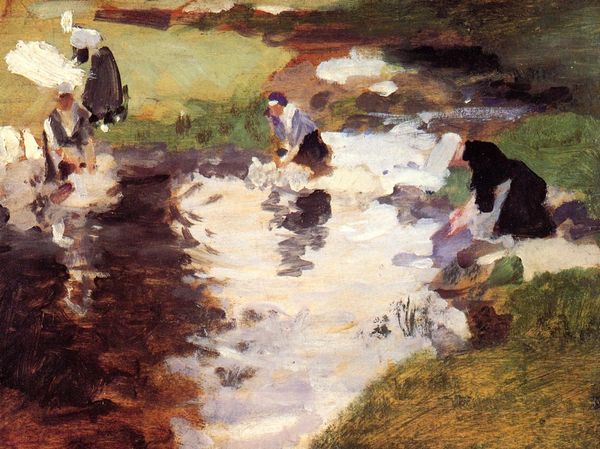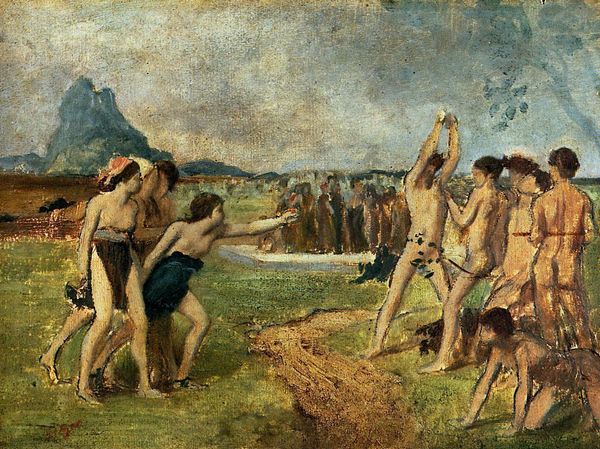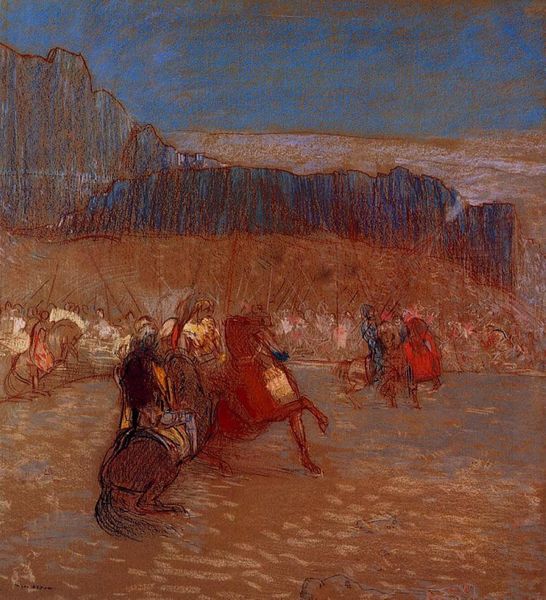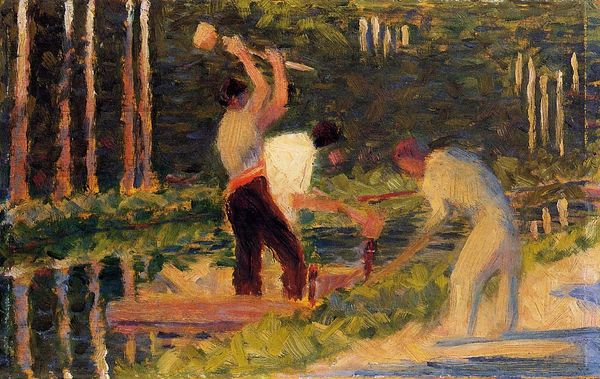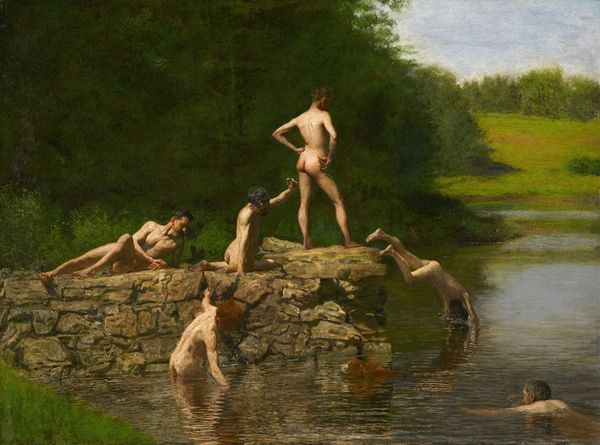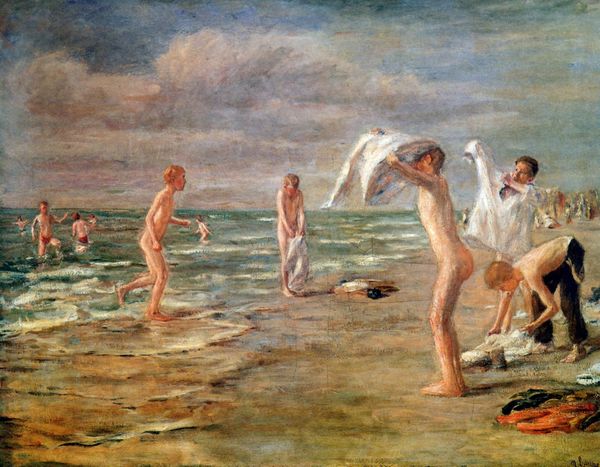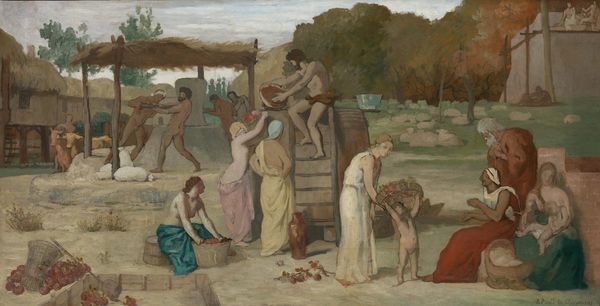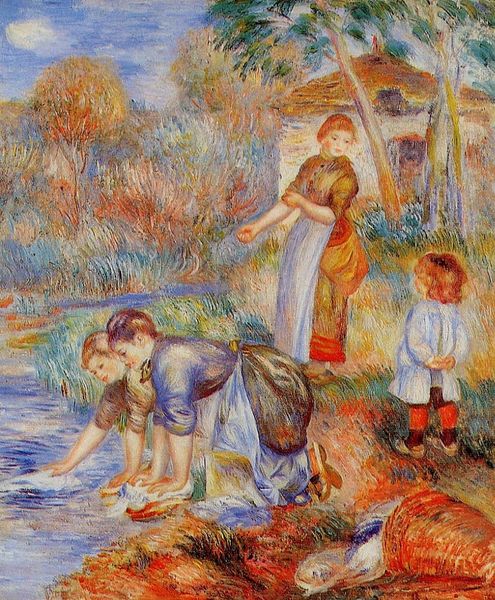
painting, oil-paint
#
painting
#
oil-paint
#
landscape
#
oil painting
#
child
#
genre-painting
#
post-impressionism
#
nude
Dimensions: 60 x 73 cm
Copyright: Public domain
Curator: Welcome. Before us hangs Paul Gauguin’s “Bathing Place,” created in 1886, an oil painting currently residing in the Hiroshima Museum of Art. Editor: My first thought is how Gauguin manages to make even a casual scene of boys bathing feel monumental. There's a real earthiness, almost a pagan quality to it. Curator: Indeed. Observe Gauguin's technique – the textured surface built from countless small brushstrokes, indicative of his post-impressionist explorations. Consider the materiality of paint itself, the build-up of pigment, which contributes to this "earthiness." It’s also critical to note the labor and craftsmanship embedded within those choices. Editor: I agree. It certainly has to do with more than just pigment application, there's more to it that gives it the emotional weight, and the lack of specific features blurs into the universal idea of youth and carefree play, invoking perhaps an Arcadia. Curator: Interesting… Gauguin’s choice to portray these children, perhaps rural Breton youth, engaging in such commonplace acts serves to underscore his challenge to the accepted hierarchies of art. Where history painting and portraiture had traditionally been celebrated, he elevates these seemingly ordinary subjects and experiences. Editor: Well, looking at it from an iconographical point of view, water has almost always been considered a transformative element, and its presence combined with these young bodies, suggests ideas of purification, of entering into something new. It reminds me of rituals I read about when doing research in classical literature. Curator: Don't miss the material trappings, like the discarded garments on the bank that almost demand our attention. By including these everyday objects, these humble artifacts, Gauguin forces a consideration of class, and consumption – a silent commentary, if you will, on the socio-economic landscape of late 19th century France. Editor: It does draw the eye but there is a spiritual side as well! Note, however, the repetition of the reclining figures echoing the slopes of the landscape which ties the boys closely with the natural world… there's a certain… innocence attached to them. Curator: So, as we depart from Gauguin’s "Bathing Place," it seems clear how an analysis of material, process and labor reveals rich meaning within the work. Editor: And through this particular assembly of chosen visuals, Gauguin, it seems, offers something deeper – something primordial about the continuity of youth and nature, if we’re open to considering those echoes across time.
Comments
No comments
Be the first to comment and join the conversation on the ultimate creative platform.
